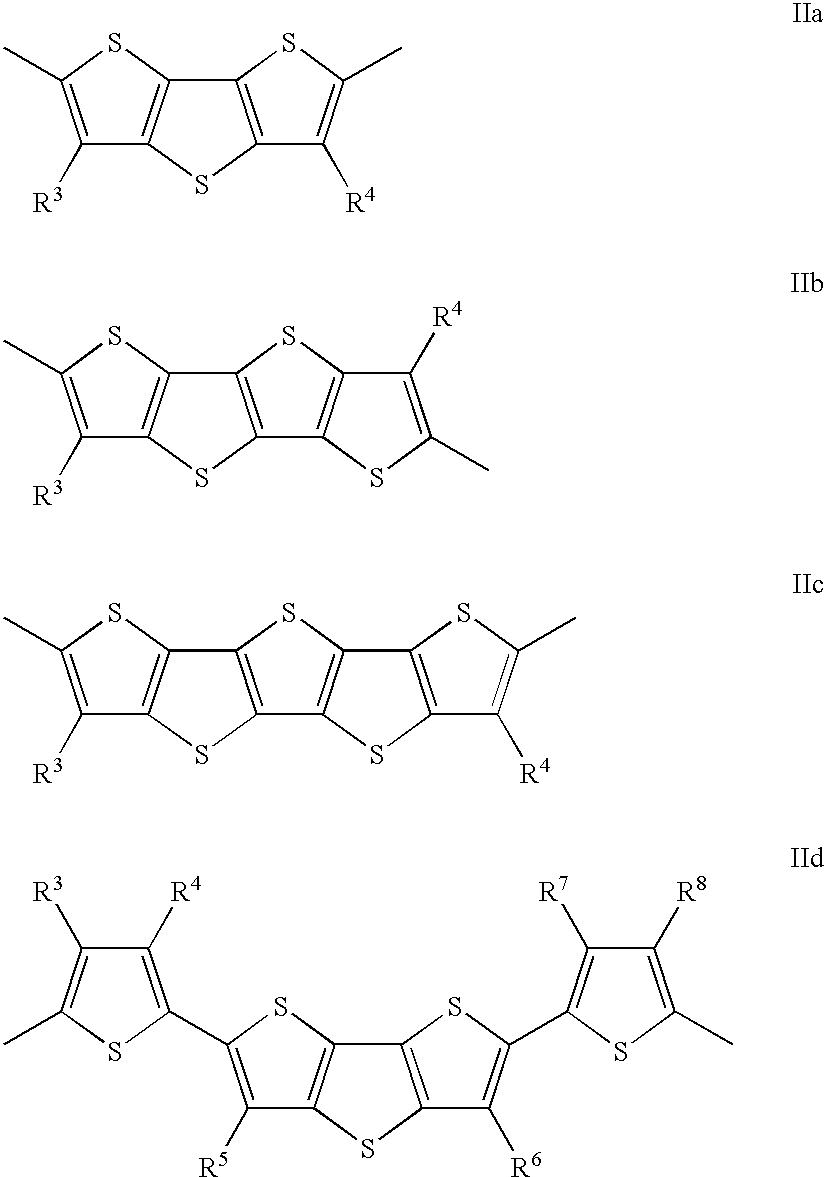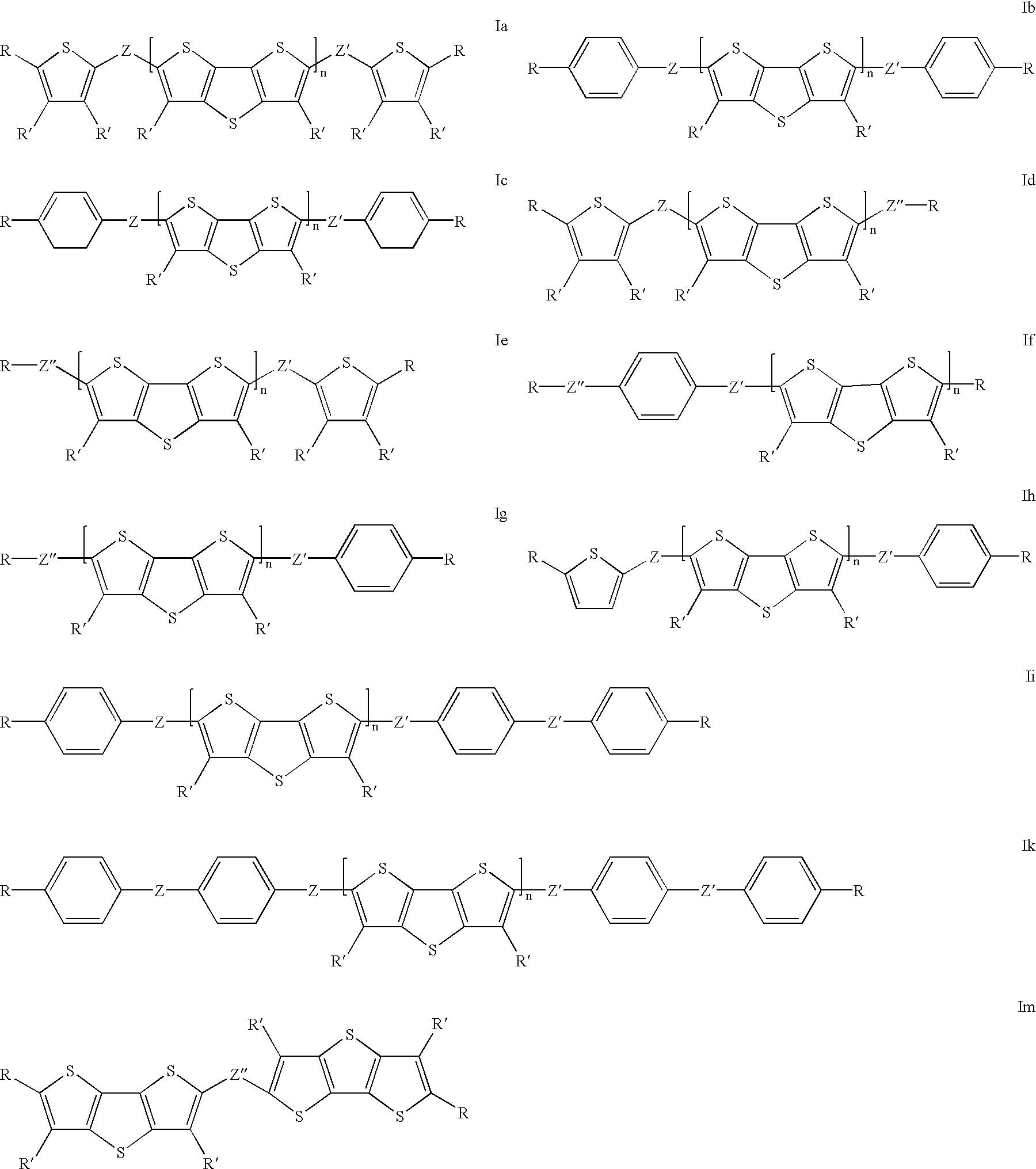Thienothiophene derivatives
a technology of thienothiophene and derivatives, applied in the direction of non-metal conductors, instruments, conductors, etc., can solve the problems of reduced device performance, inability to easily solve the processing of materials described in prior years, and inability to meet the requirements of the device performan
- Summary
- Abstract
- Description
- Claims
- Application Information
AI Technical Summary
Benefits of technology
Problems solved by technology
Method used
Image
Examples
example 2
Compound (2) was prepared as follows: ##STR12##
2,6-Dibromo-dithieno[3,2-b;2',3'-d]thiophene (1.0 g, 2.8 mmol) and 4'-heptylphenyl-2,3-difluorophenyl benzoic acid (2.1 g), sodium carbonate (1.07 g, 10.1 mmol in 20 ml water) and a catalytic amount of palladium bis(triphenylphosphine) dichloride were stirred under reflux in tetrahydrofuran. After 16 h, the brown solution was poured in to dichloromethane, washed with water, the chlorinated phase was removed, dried over sodium sulphate and evaporated to dryness. The residue was purified by flash column chromatography using petroleum (80-100) followed by dichloromethane as eluant. Evaporation of the appropriate fractions yielded (2) as a bright yellow solid (430 mg). .sup.1 H and .sup.13 C NMR showed expected signals.
The following transitions and phases were observed by optical microscopy:
PUM
| Property | Measurement | Unit |
|---|---|---|
| conducting | aaaaa | aaaaa |
| charge transport | aaaaa | aaaaa |
| charge transport properties | aaaaa | aaaaa |
Abstract
Description
Claims
Application Information
 Login to View More
Login to View More - R&D
- Intellectual Property
- Life Sciences
- Materials
- Tech Scout
- Unparalleled Data Quality
- Higher Quality Content
- 60% Fewer Hallucinations
Browse by: Latest US Patents, China's latest patents, Technical Efficacy Thesaurus, Application Domain, Technology Topic, Popular Technical Reports.
© 2025 PatSnap. All rights reserved.Legal|Privacy policy|Modern Slavery Act Transparency Statement|Sitemap|About US| Contact US: help@patsnap.com



